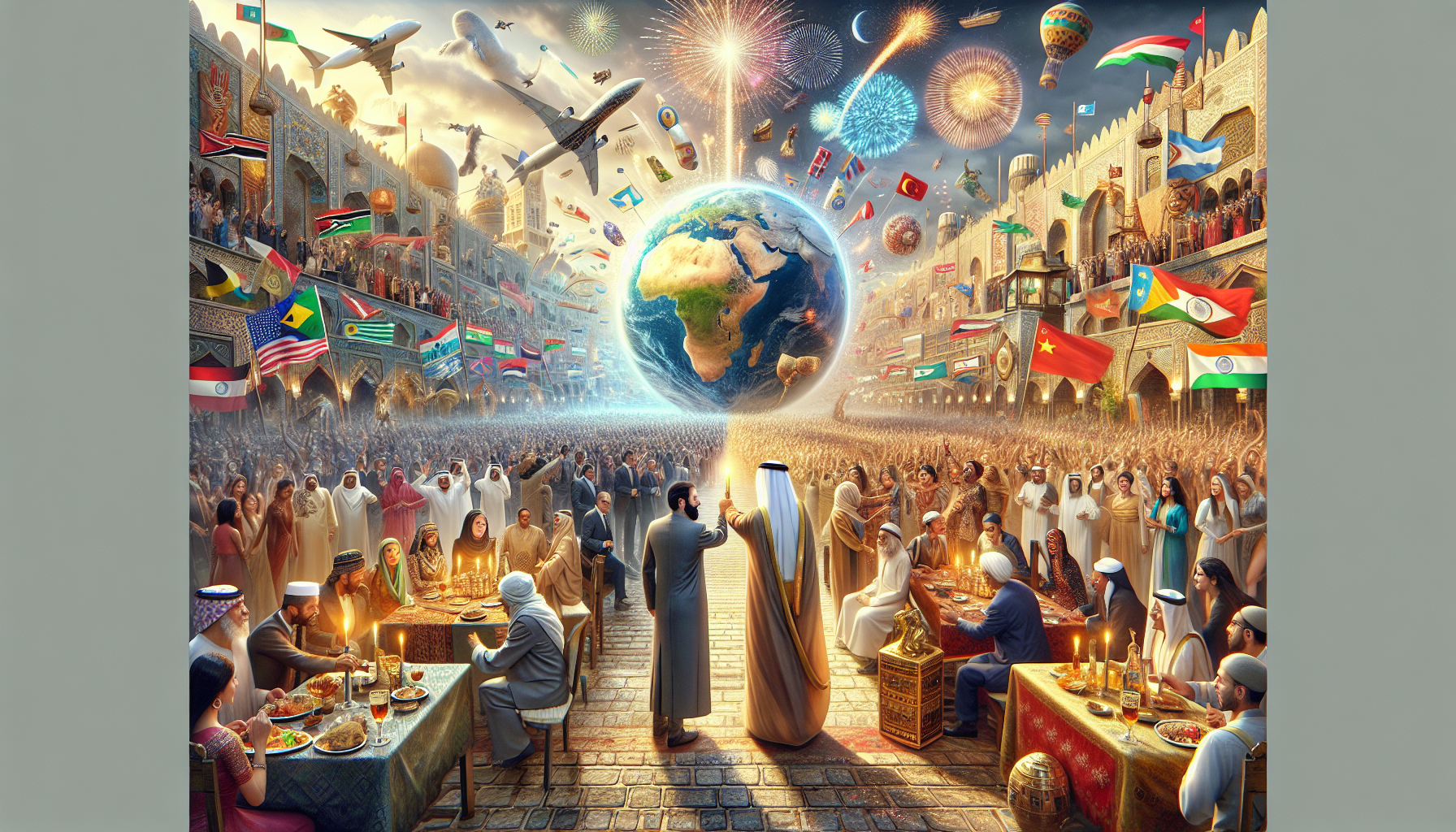Advertisements
As the New Year approaches, celebrations spread across the world, with each country and culture having its own unique traditions and customs. In addition to the parties and fireworks, there are surprising practices and rituals involving everything from special foods to superstition and symbolism.
Advertisements
In this article, we’ll explore the fascinating origins behind New Year’s customs around the world, delving into traditions that go far beyond the typical celebrations. Discover how different cultures celebrate the New Year, from burning dolls in Colombia to the Feng Shui cleansing ritual in China.
Prepare to be amazed by the curiosities and stories behind each tradition, which reveal the richness and cultural diversity that exists in the world. By learning about these practices and customs, we can not only expand our knowledge, but also value the importance of keeping the traditions of our ancestors alive.
Whether you’re a New Year’s Eve enthusiast or simply curious about different cultures around the world, this article will take you on an exciting journey through the surprising origins of New Year’s customs. Get ready to discover unusual and fascinating traditions that connect us with the history and diversity of the planet.
Advertisements
Surprising Origins of New Year's Customs Around the World
Origin of the Custom of Eating 12 Grapes in Spain
In Spain, one of the most popular New Year's traditions is eating 12 grapes at midnight. Each grape represents a month of the year and brings good luck to those who eat them. The origins of this tradition date back to the 20th century, when farmers in the Alicante region had a record grape harvest and decided to distribute them among the population as a way to celebrate the arrival of the New Year.
- Origin: Spain
- Meaning: Good luck for each month of the year
The Burning of Dolls in Scotland
In Scotland, the tradition of burning wooden dolls on New Year's Eve, known as “Hogmanay”, has its origins linked to pagan and Celtic practices. It is believed that the act of burning the dolls represents the purification of the past and renewal for the new year that is beginning.
- Origin: Scotland
- Meaning: Purification of the past and renewal
Origin of Fireworks in Japan
In Japan, fireworks are an essential part of New Year celebrations, known as “Oshogatsu.” The tradition of setting off fireworks has its roots in the 7th century, when Emperor Shomu ordered a fireworks display to ward off evil spirits and bring good luck for the new year.
- Origin: Japan
- Meaning: Ward off evil spirits and bring good luck
Lion Dance in China
In China, the Lion Dance is a centuries-old tradition performed during the New Year festivities, known as “Chun Jie”. The dance, which involves a group of dancers dressed as a lion, is intended to ward off evil spirits and bring prosperity and good fortune for the coming New Year.
- Origin: China
- Meaning: Ward off evil spirits and bring prosperity

Therefore, by exploring the different New Year traditions and customs around the world, we are led to appreciate the beauty of cultural diversity and the importance of keeping ancient practices alive. Each ritual and celebration carries with it a unique story and deep meaning, connecting us to the roots of our societies and reminding us of the importance of honoring and preserving our cultural heritage. May New Year traditions continue to inspire us and unite us in a common desire for renewal, prosperity and happiness for the year ahead.
As we reflect on the origins and meanings of New Year’s customs around the world, we are invited to appreciate the beauty of cultural diversity and the importance of keeping ancient traditions alive. Each ritual and celebration connects us not only to the roots of our societies, but also to the essence of humanity in its quest for renewal, prosperity, and happiness. As we celebrate the beginning of a new cycle, we are reminded of the importance of honoring history and preserving the cultural heritage that makes us unique, while uniting us in a common desire for peace, harmony, and growth for the future that lies ahead. May New Year’s traditions continue to inspire us and remind us of the richness that cultural diversity provides, enriching our lives and strengthening the bonds that unite us as human beings in an increasingly interconnected world filled with possibilities for the coming year. May we learn from each other and, together, build a better future.
Conclusion
In conclusion, the origins of New Year’s customs around the world reveal traditions deeply rooted in symbolic and historical meaning. From the practice of eating 12 grapes in Spain to bring good luck each month of the year, to the burning of dolls in Scotland as a way of purifying the past and renewing for the future, each custom carries with it a unique history rich in meaning.
Fireworks in Japan, for example, have their origins in the 7th century, when they were used to ward off evil spirits and bring good luck for the new year. Meanwhile, in China, the Lion Dance during New Year's festivities is intended to ward off evil spirits and bring prosperity for the coming year.
It’s fascinating to see how different cultures around the world celebrate New Year’s Eve in such different ways, but always with the common goal of attracting good energy and renewing hope for the future. These traditions remind us of the importance of preserving and honoring the cultural roots that shape our identity and connect us to the past.
In short, New Year's traditions go far beyond parties and fireworks, revealing the richness and diversity of cultures around the world and the universality of the desire for a new year filled with prosperity, health and happiness.




